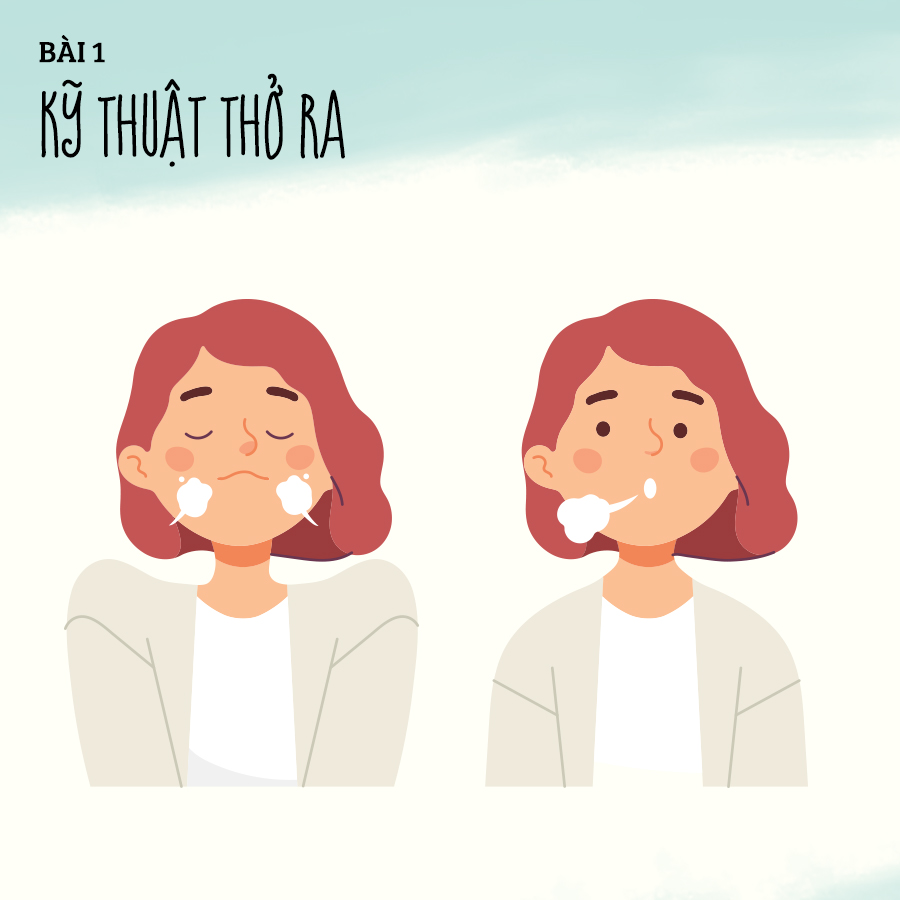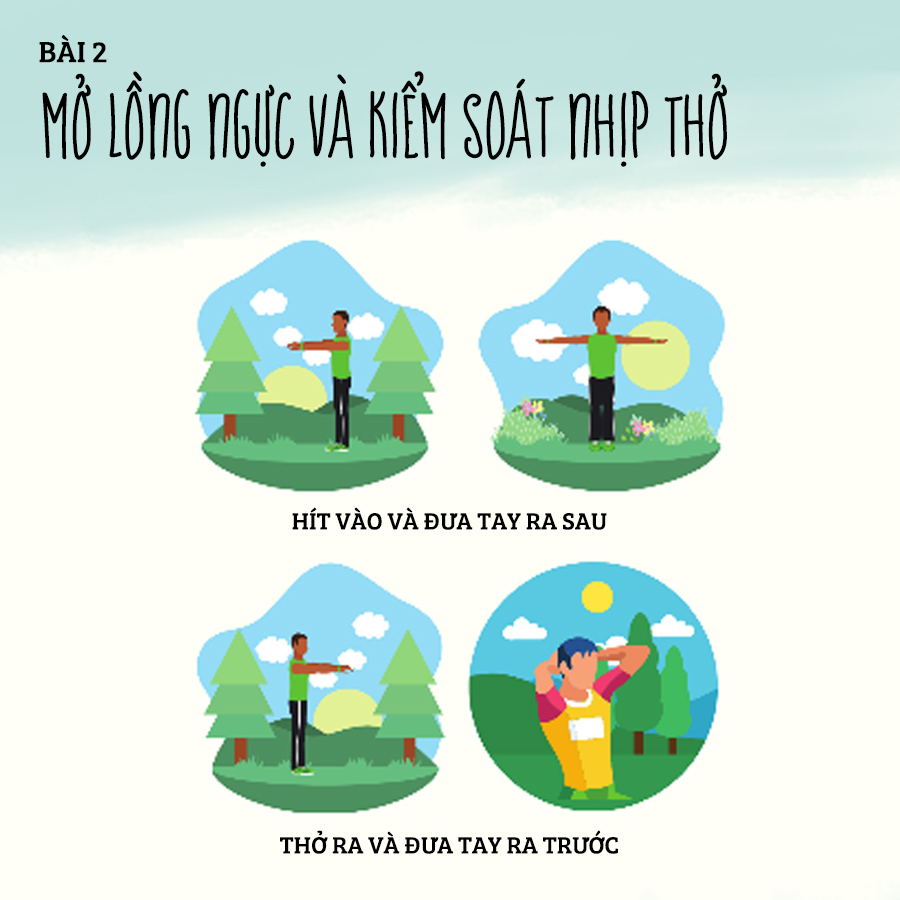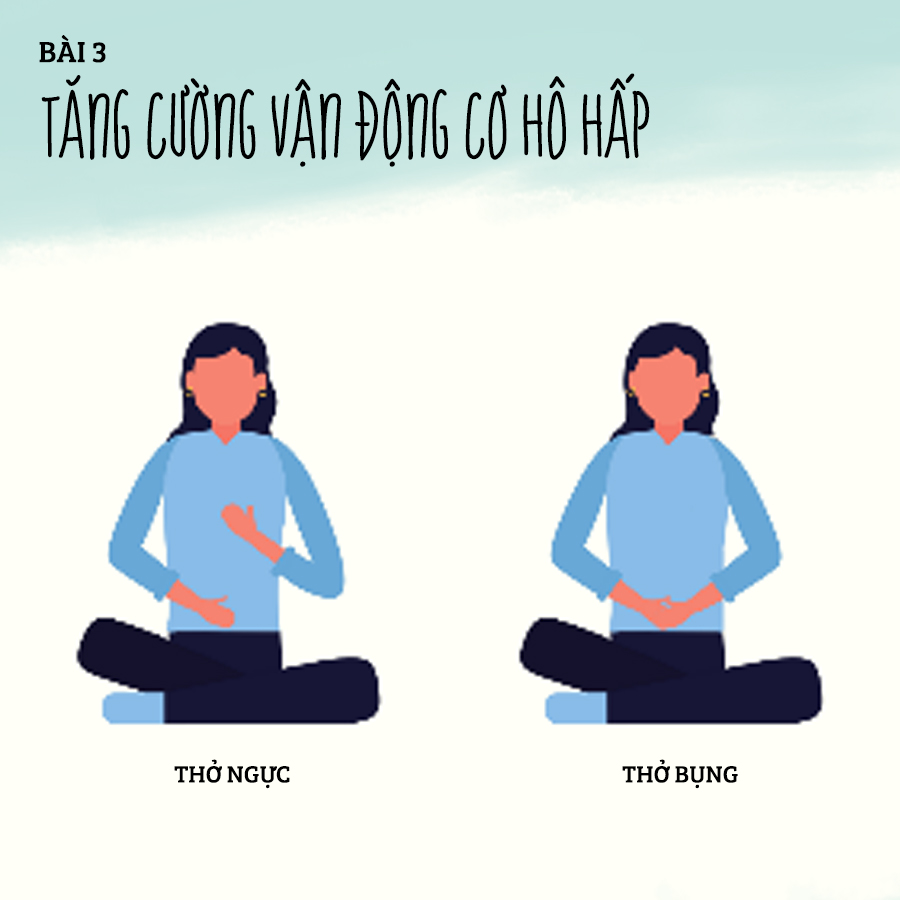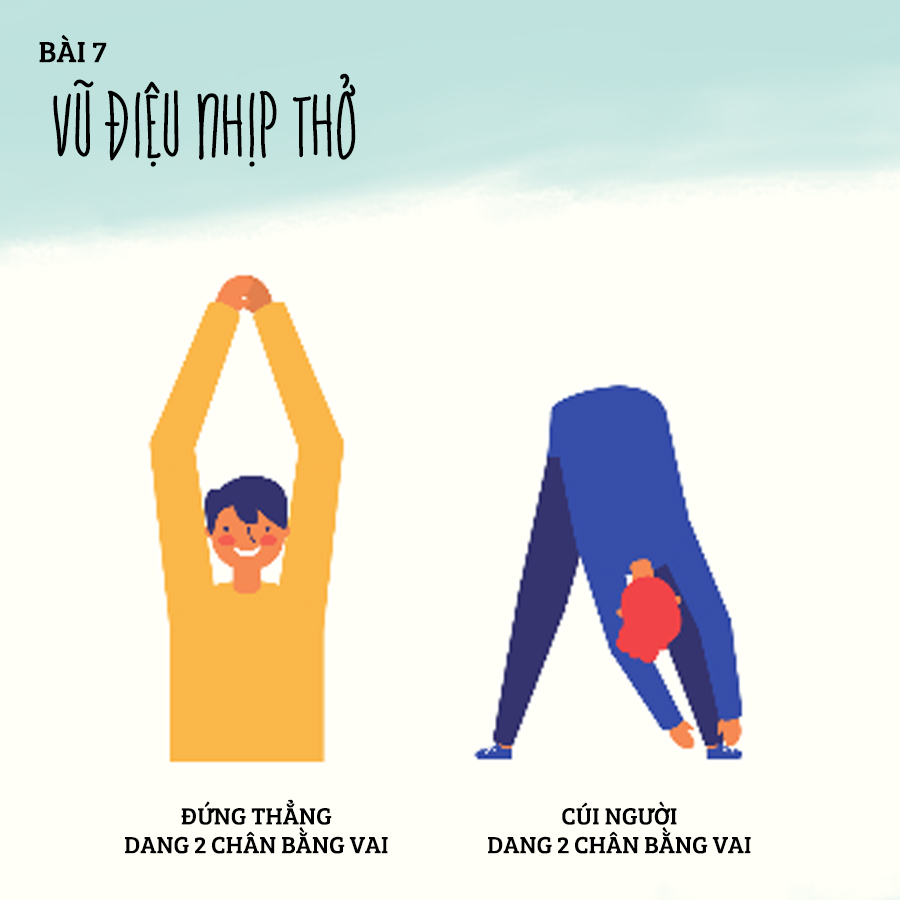Bài tập phục hồi chức năng PHỔI cho người nhiễm COVID-19
Phục hồi chức năng phổi rất cần thiết ở người sau điều trị COVID-19. Bài tập này cũng có thể sử dụng trong trường hợp mệt mỏi do làm việc liên tục kéo dài, suy giảm chức năng hô hấp mạn tính, giúp làm giảm các triệu chứng khó thở, lo lắng và trầm cảm, cải thiện thể chất và chất lượng cuộc sống. Đây giống như bài thể dục nên mỗi ngày có thể tập một vài lần, mỗi động tác khoảng 8-10 lần.

24/08/2021 10:49:22 SA
Bài 1: Kỹ thuật thở ra
- Thở ra kéo dài: Hít vào bằng mũi, sau đó thở ra kéo dài bằng miệng
- Thở ra mạnh: Hít vào bằng mũi, sau đó thở ra nhanh và mạnh bằng miệng, giúp khai thông đường thở bằng phản xạ ho ở cuối kỳ thở ra

Bài 2: Mở lồng ngực và kiểm soát nhịp thở
- Động tác 1: Đưa hai tay ra trước, bắt đầu hít vào và đưa hai tay ra sau tối đa. Sau đó thở ra từ từ và đưa tay về vị trí cũ.
- Động tác 2: Đưa hai cùi chỏ ra trước, bắt đầu hít vào và xoay cùi chỏ tối đa ra sau. Sau đó thở ra từ từ và xoay cùi chỏ về vị trí cũ.

Bài 3: Tăng cường vận động hô hấp
- Thở ngực: Đặt một tay lên ngực, một tay lên bụng. Bắt đầu hít vào tối đa cho lồng ngực nở ra, sau đó thở ra từ từ. Lưu ý hóp bụng, giữ cho bụng không phình ra trong lúc hít thở.
- Thở bụng: Đưa hai tay lên bụng, hít vào cho đến khi bụng phình ra tối đa, sau đó thở ra cho đến khi bụng xẹp vào tối đa.

Bài 4: Loại bỏ dung tích khí cặn trong phổi
- Thổi bóng hết sức: Tương đương với thở ra hết sức, giúp loại bỏ khí cặn trong phổi. Đưa bóng lên miệng, lấy hơi rồi thổi một hơi kéo dài, thở ra hết sức trong một lần thổi.
.jpg)
Bài 5: Tăng cường sức bền
- Cánh chim bay: Hai tay cầm tạ buông dọc theo thân mình, bắt đầu hít vào và nâng hai tay sang ngang. Sau đó thở ra từ từ và hạ tay xuống vị trí cũ.
- Cánh tay đan chéo: Hai tay cầm tạ đưa sang ngang và bắt đầu hít vào. Sau đó thở ra với hai tay nhau phía trước.
- Cánh tay trên đầu: Hít vào đồng thời đưa hai tay cầm tạ qua đầu sau đó thở ra và hạ tạ xuống.

Bài tập 6: Tăng dung tích sống từng thùy phổi
- Thùy phổi giữa: Choàng khăn từ sau lưng ra trước ngực, vị trí phía dưới nách. Hai tay đan chéo cầm hai đầu khăn. Bắt đầu hít vào thật sâu và siết khăn lại, sau đó buông khăn đột ngột và thở ra.
- Thùy phổi dưới: Làm tương tự nhưng khăn nằm ở vị trí dưới ngực. Lưu ý buông khăn trước khi bắt đầu thì thở ra.

Bài 7: Vũ điệu nhịp thở
- Động tác 1: Đứng thẳng, chân dang ngang bằng vai. Hít vào và đưa hai cánh tay lên chụm vào nhau. Sau đó thở ra và đưa tay về vị trí cũ.
- Động tác 2: Cúi người, chân dang ngang bằng vai, canh tay đan chéo. Hít vào và vươn người lên với hai cánh tay chum vào nhau, sau đó thở ra và đưa tay về vị trí cũ.

Nguồn: Bênh viện 1A